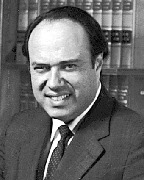Earlier this year I wrote an article on representing a buyer of a condominium unit. In this article I am going to discuss how to represent an individual seller of a condominium unit. I am not going to discuss how to represent a converter or a developer in a unit sale. Rather, I will outline how to represent a unit seller in a resale.
The closing of a condominium unit is more complicated than the closing of a single family home. A condominium unit is part of a building or buildings with other owners, and is governed by a complex set of documents. As so many condominium units are financed by a lender using the secondary mortgage market, the seller's attorney should check to see if the condominium complies with the requirements of the secondary market. The seller should know if there is non-compliance as this will effect the marketability of the unit.
The seller's real estate broker should prepare and the seller's attorney should review the offer before it is signed. The seller's attorney should prepare the purchase and sale agreement ("P&S"). I believe that a standard form of condominium resale P&S with a rider that protects the seller is the best approach. In the event of a short sale, a special rider is required. The P&S should carefully delineate the parking spaces, storage bin, and any other exclusive use areas in order to prevent any confusion post-closing. The P&S should provide for an "as is" sale unless the seller agrees to do certain remedial work prior to the closing.
The seller or his broker should deliver copies of the recorded condominium documents and all recorded amendments as well as a copy of a recorded plan which shows the unit. The seller or his broker should deliver a copy of the title insurance policy and of his deed. The seller or his broker should deliver copies of all title exceptions that appear on the title insurance policy. A payoff letter, a partial release, or a discharge of all mortgages will be needed for the closing.
At the closing, a unit deed with the correct percentage ownership of the unit in the common areas of the condominium, a 6(d) certificate (M.G.L. Chapter 183A, Section 6(d)), an insurance certificate with the correct mortgagee clause, and a fire inspection and carbon monoxide detector certificate will be needed. The 6(d) certificate is very important. The Condominium Trustees have to deliver a 6(d) certificate, but they do not have to deliver a clean 6(d) certificate. Any common area expenses listed on the 6(d) certificate as being unpaid are a lien and will cause problems for the seller. A certificate of appointment of new trustees may have to be recorded in order to make the 6(d) certificate effective. Also, if the seller is a trustee, the seller should resign because serving as a trustee exposes the seller to liability.
The broker and seller should be aware that the lender and the buyer may also want a current budget and financial report. Some lenders want a copy of the entire insurance policy.
At the closing, the settlement statement is the same as for a house, except for adjustments for common expenses and for recording of the 6(d) certificate. In most cases, there is no adjustment between the seller and buyer for the working capital reserves. There should not be any holdbacks.
It is clear that the sale of a condominium unit is more complicated than the sale of a house. A seller should start by finding a broker and a lawyer who know their condominiums.
Saul Feldman is a real estate attorney with Feldman & Feldman, P.C., Boston, Mass.
Tags:









